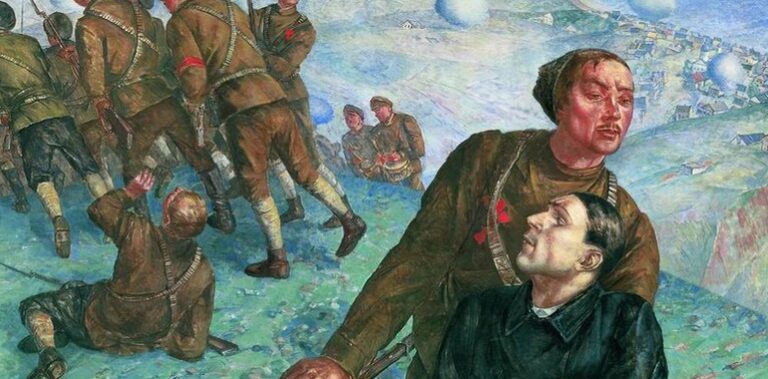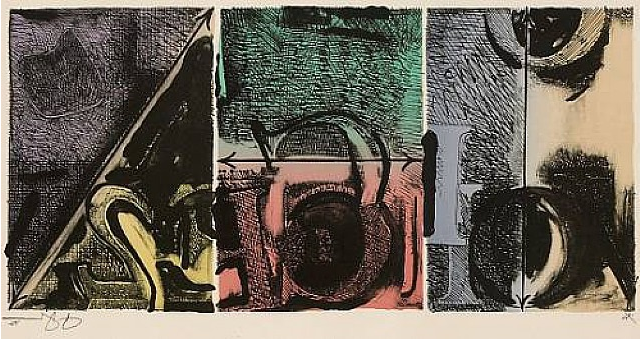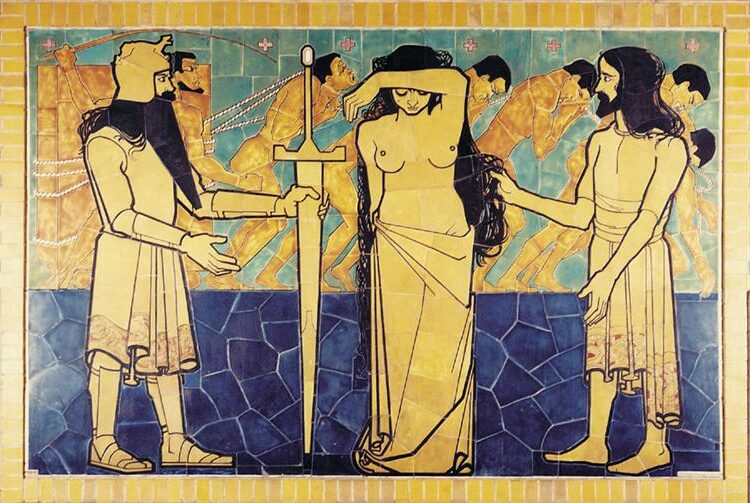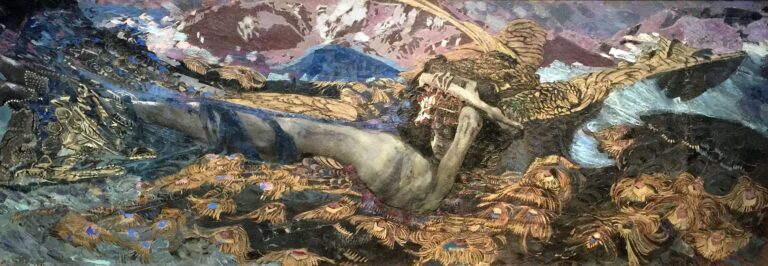Canaletto (Giovanni Antonio Canal) Painter: Venetian Master of Cityscape Art
Born: 18 October 1697, Venice, Venetian Republic
Death: 19 April 1768, Venice, Venetian Republic (now Italy)
Art Movement: Baroque, Rococo
Nationality: Italian
Influenced By: Giovanni Paolo Pannini
Canaletto (Giovanni Antonio Canal) Painter: Venetian Master of Cityscape Art
Life and Legacy
Canaletto’s journey from a theatrical scene painter’s son to one of Venice’s most celebrated artists spans over seven decades of artistic innovation and influence. His precise technique and commercial success established a new standard for topographical painting that continues to impact art today.
Early Life and Training
Giovanni Antonio Canal, better known as Canaletto, was born in Venice on October 17 or 18, 1697. He came from a social class just below the Venetian patrician nobility.

The Doge and Grand Council in Sala del Maggior Consiglio, 1763
His father, Bernardo Canal, worked as a theatrical scene painter, providing young Canaletto with his first artistic training. This early exposure to theatrical perspective and architectural representation greatly influenced his later painting style.
In 1719, Canaletto traveled to Rome for approximately one year. This journey proved pivotal in his artistic development. While there, he likely studied with Dutch and other foreign artists working in the city, expanding his technical skills beyond his father’s teachings.
Key Patrons and Influences
Canaletto’s career flourished largely due to wealthy foreign patrons, particularly British aristocrats on Grand Tours of Europe. His precise vedute (view paintings) of Venice became fashionable souvenirs.
Joseph Smith, a British merchant and later consul in Venice, became Canaletto’s most important patron and agent. Smith commissioned numerous works and promoted Canaletto’s paintings to British collectors, significantly expanding his reputation abroad.
When tourism to Venice declined during the War of Austrian Succession (1740-1748), Canaletto relocated to London. He spent nearly a decade there, painting cityscapes of the Thames and English country houses before returning to Venice.
Legacy
Canaletto revolutionized the veduta genre with his precise observation and technical excellence. His works provide valuable historical documentation of 18th-century Venice while also standing as artistic achievements.

The Entrance to the Grand Canal (1730) by Canaletto
He trained numerous artists, most notably his nephew Bernardo Bellotto, who adopted the name “Canaletto” in some regions. Bellotto spread his uncle’s style throughout Europe, particularly in Germany and Poland.
Other Venetian artists like Francesco Guardi and Michele Marieschi followed Canaletto’s path but developed their own distinctive styles. The Venetian Academy eventually recognized the importance of vedute painting largely due to Canaletto’s influence.
Today, Canaletto’s works remain highly valued for their artistic merit and historical significance. His paintings grace major museums worldwide and continue to shape our visual understanding of 18th century Venice.
Artistic Style and Techniques
Canaletto developed a distinctive approach to painting that combined precise detail with atmospheric effects. His techniques revolutionized landscape art, particularly in his depictions of urban scenes and architectural views.
Developing the Veduta Style
Canaletto mastered the veduta (view) painting style, creating highly detailed and accurate topographical representations of cities. His Venetian scenes captured the city’s unique architecture and waterways with remarkable precision.

The Grand Canal with San Simeone Piccolo (1740) by Canaletto
Unlike previous landscape artists, Canaletto focused on architectural accuracy while still conveying the atmosphere and light of a location. He often positioned himself at strategic vantage points to capture grand panoramic views of canals, piazzas, and buildings.
His paintings documented daily life in Venice, showing bustling market squares, gondoliers, and festive gatherings. This combination of architectural precision and human activity gave his works both documentary value and artistic appeal.
Use of Camera Obscura
Canaletto likely employed a camera obscura, an optical device that projected images onto a surface, to achieve his extraordinary precision. This tool helped him capture complex architectural details and perfect linear perspective.
The device projected an image through a small hole onto a surface where the artist could trace outlines and proportions. This technique explains the mathematical accuracy in his cityscapes and the consistent perspective seen throughout his work.
While using this tool, Canaletto didn’t simply trace mechanically. He enhanced compositions by adjusting elements, improving light effects, and adding atmospheric qualities that pure mechanical reproduction couldn’t achieve.
Influence on Later Art Movements
Canaletto’s precise yet atmospheric style influenced generations of landscape painters. His ability to balance architectural accuracy with artistic interpretation set new standards for topographical painting.
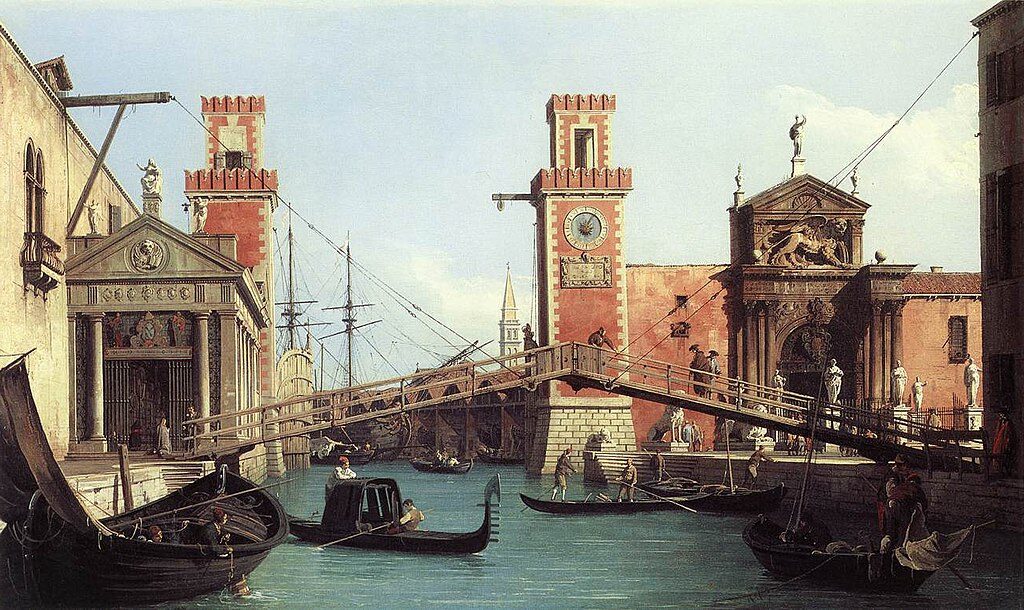
View of the Entrance to the Venetian Arsenal (1732) by Canaletto
His work became particularly influential in England, where collectors and artists admired his technical prowess. The English landscape tradition, including artists like Turner, drew inspiration from Canaletto’s handling of light and atmosphere.
Canaletto’s detailed urban scenes also anticipated aspects of Impressionism, particularly in his later works where he sometimes used looser brushwork to capture light effects. His etchings demonstrated his versatility and influenced printmaking techniques.
The “capricci” paintings—imaginative compositions combining real and fictional architectural elements—influenced later artists who explored architectural fantasy in their work.
Notable Works and Commissions
Canaletto created hundreds of paintings throughout his career, with many commissioned by wealthy patrons eager to own his precise views of Venice and other European locations. His meticulous attention to detail and mastery of light made his works highly sought after during his lifetime.
Views of Venice and the Grand Canal
Canaletto’s depictions of Venice remain his most celebrated works. “The Stonemason’s Yard” (1729) stands as one of his masterpieces, showing everyday Venetian life with remarkable accuracy and vibrant atmosphere. This painting demonstrates his exceptional talent for capturing both architectural precision and human activity.
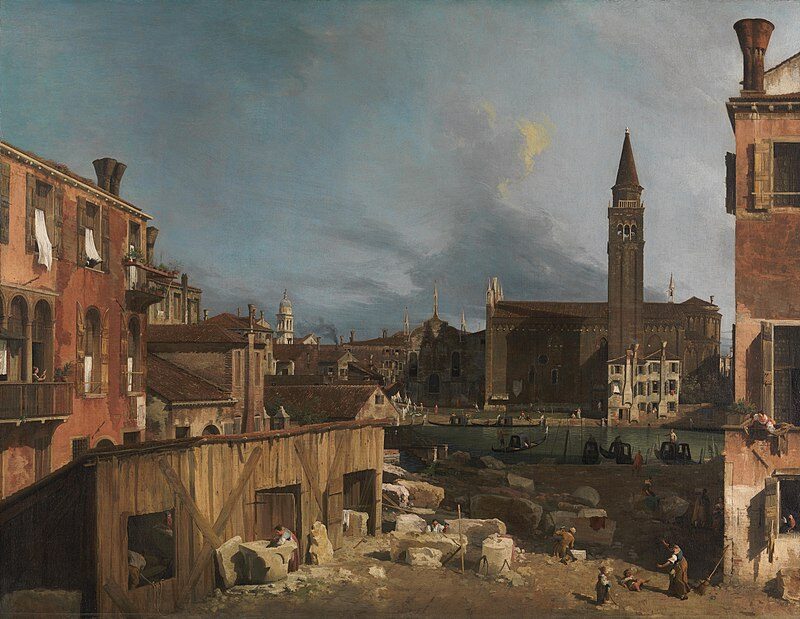
The Stonemason’s Yard (c. 1725) by Canaletto
His numerous views of the Grand Canal showcase Venice’s magnificent waterway from various perspectives. “The Grand Canal looking North-East from Palazzo Balbi to the Rialto Bridge” displays his ability to render water, light, and architecture with photographic precision.
The “Regatta on the Grand Canal” series documents the city’s famous boat races, combining architectural accuracy with lively depictions of crowds and festivities. His paintings of the Doge’s Palace and St. Mark’s Square became definitive images of Venice that influenced how the city was perceived worldwide.
The Grand Tour Series
Canaletto’s works became essential souvenirs for wealthy Europeans completing the Grand Tour—an educational journey through Europe’s cultural centers. His vedute (view paintings) were particularly popular among British aristocrats who wanted mementos of their travels.
The demand was so great that Canaletto employed a workshop to help meet it. His paintings served as sophisticated travel postcards, documenting famous landmarks and scenic vistas with remarkable accuracy.
When tourism to Venice declined during the War of Austrian Succession (1740-1748), Canaletto moved to England. There, he created views of London, including the Thames and the new Westminster Bridge, applying his Venetian style to British landscapes.
Major Works Held in Royal Collections
The largest single collection of Canaletto’s works resides in Britain’s Royal Collection. This impressive group of paintings was primarily assembled by Joseph Smith, a British merchant and consul in Venice who became Canaletto’s patron and agent.
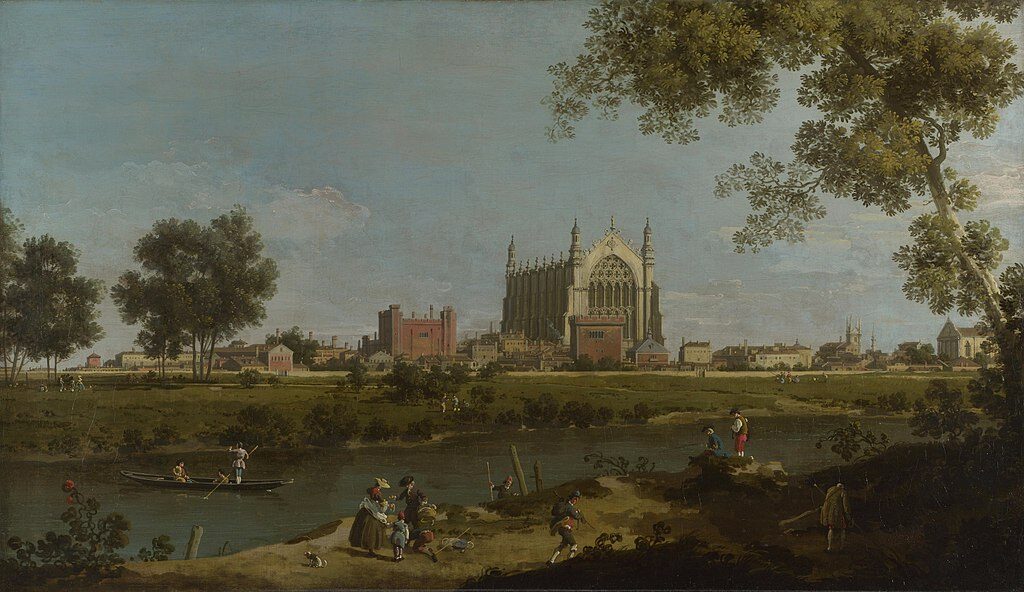
Eton College (1754) by Canaletto
In 1762, King George III purchased Smith’s entire collection, acquiring 50 paintings and 150 drawings by Canaletto. These works showcase the artist’s range, from grand ceremonial scenes to intimate views of lesser-known Venetian locations.
The Bucintoro at the Molo on Ascension Day depicts the Doge’s golden ceremonial barge during Venice’s Marriage to the Sea ceremony. This painting exemplifies Canaletto’s skill at capturing both architectural detail and bustling crowds during important civic events.
The Wallace Collection, Metropolitan Museum of Art, and National Gallery in London also hold significant works by the master, making his art accessible to audiences worldwide.
Frequently Asked Questions
Canaletto’s distinctive style and historical importance have prompted many inquiries from art enthusiasts and scholars. His detailed Venetian scenes and technical innovations continue to fascinate viewers centuries after their creation.
What are the distinguishing characteristics of Canaletto’s painting style?
Canaletto’s style features meticulous attention to architectural detail and precise perspective. He used a camera obscura to achieve accuracy in his urban landscapes.
His paintings display remarkable luminosity and atmospheric effects, with distinctive blue skies dotted with puffy white clouds. These skies became a recognizable signature element.
Canaletto populated his scenes with small, lively figures that add human scale and narrative interest to his architectural compositions.
Which institutions house the most significant collections of Canaletto’s work?
The Royal Collection at Windsor Castle holds the largest collection of Canaletto works, acquired primarily by King George III. These paintings showcase Venice for British aristocrats who visited during their Grand Tours.
The National Gallery in London displays several masterpieces, including his famous Venice: The Basin of San Marco on Ascension Day.
The Thyssen-Bornemisza Museum in Madrid and the Metropolitan Museum of Art in New York also maintain important collections of his paintings and drawings.
How did Canaletto contribute to the vedute genre in art?
Canaletto elevated vedute (view paintings) from simple topographical records to fine art. He transformed this previously minor genre into highly collectible works sought by European nobility.
His technical precision and atmospheric effects set new standards for urban landscape painting. These innovations influenced generations of artists working in the vedute tradition.
Canaletto often combined factual recording with creative adjustments, sometimes rearranging buildings or widening canals to create more pleasing compositions.
What is the historical significance of Canaletto’s Venetian landscapes?
Canaletto’s works serve as invaluable historical documents of 18th-century Venice. They record architectural details of buildings that have since been altered or destroyed.
His paintings captured Venice during its decline as a major political power but continued celebration as a cultural center. This documentation provides insights into Venetian society during a pivotal historical period.
These works helped shape the romantic image of Venice that persists today, influencing tourism and cultural perceptions of the city.
How has Canaletto’s work influenced later artists and art movements?
Canaletto’s precise technique influenced urban landscape painters throughout Europe. His careful observation and rendering of light effects impacted both academic and impressionist approaches to cityscape painting.
His compositions established conventions for depicting Venice that artists still reference. Contemporary photographers and painters often engage with Canaletto’s visual vocabulary when portraying the city.
His use of the camera obscura anticipated photographic seeing, creating a bridge between traditional painting and modern visual technologies.
What are some of the most notable exhibitions featuring Canaletto’s paintings?
The “Canaletto and His Rivals” exhibition at the National Gallery (London, 2010-2011) compared his work with contemporaries. It demonstrated his superior technical abilities and artistic vision.
Another exhibition, “Canaletto: The Art of Venice,” toured internationally in 2017-2018. It displayed works from the Royal Collection and highlighted his development as an artist.
Then, the “Venice: Canaletto and His Rivals” exhibition at the National Gallery of Art in Washington, DC (2011) examined his position within the competitive market for view paintings in 18th-century Venice.



